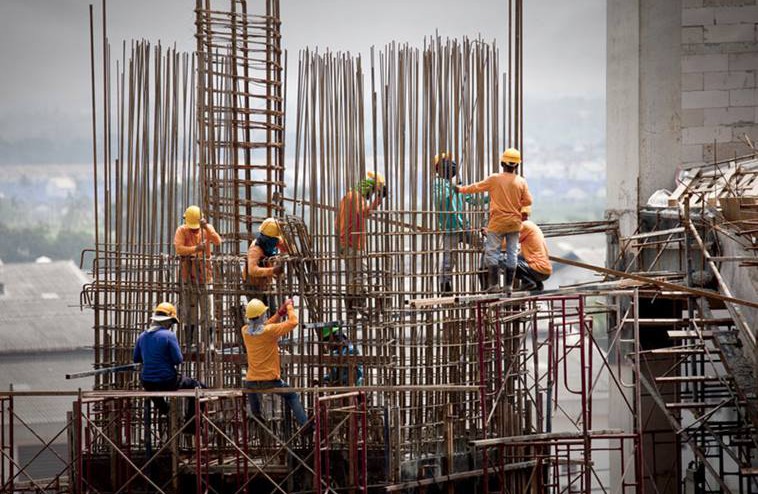
The third quarter saw and expansion in the Irish Construction sector with the Ulster Bank Construction PMI up to 58.7 in September.
Rising workloads fed through to increases in purchasing activity and employment, while sentiment around the prospects for future growth remained strongly positive.
The Ulster Bank Construction Purchasing Managers’ Index – a seasonally adjusted index designed to track changes in total construction activity – ticked up to 58.7 in September from 58.4 in August to signal a further sharp monthly increase in activity. Construction activity has risen continuously since September 2013 in the Commercial and Housing areas.
“The sector’s recovery continues to be underpinned by a greater availability of new work as new orders increased for the thirty-ninth month in a row, and at the fastest pace since March. The health of the trends in new business offers much encouragement about the sector’s near-term prospects both in absolute terms and relative to other areas of the economy. Notably, the pick-up in the New Orders index from already elevated levels is signalling acceleration in new business growth in the third quarter compared with the second. This is a pattern which leaves construction sector momentum looking stronger than both manufacturing and services as we enter the final quarter of the year, with recent PMIs from those sectors suggesting that Brexit impacts are weighing on activity trends in the more internationally-exposed areas of the economy.”
All three monitored categories posted an increase in activity as civil engineering saw a return to growth. That said, the sector was still the weakest performer during September. The strongest expansion was again registered on commercial activity, while housing activity also continued to rise sharply.
According to respondents, a greater availability of new work had been the key factor leading to an increase in activity. Further anecdotal evidence indicated that previously priced projects were now proceeding, helping lead to a rise in new business. New orders increased for the thirty-ninth month in a row and the rate of growth quickened to the fastest since March.
Increasing workloads led companies to raise their input buying in September. The rate of expansion remained sharp, despite easing to a three-month low.
Employment also continued to rise, but the rate of job creation eased to the weakest in a year-and-a-half. The slowdown partly reflected the non-replacement of leavers, but also a greater use of sub-contractors. In fact, sub-contractor usage increased at a solid pace that was the fastest in three months.
Suppliers’ delivery times lengthened only slightly during September, with the rate of deterioration much weaker than seen in August. Meanwhile, the rate of input cost inflation eased to a six-month low and was slightly slower than the series average.
Confidence among Irish construction firms remained elevated in September, despite easing slightly from the previous month. Companies based optimism on positive signs with regards both to the construction sector itself and the wider Irish economy.